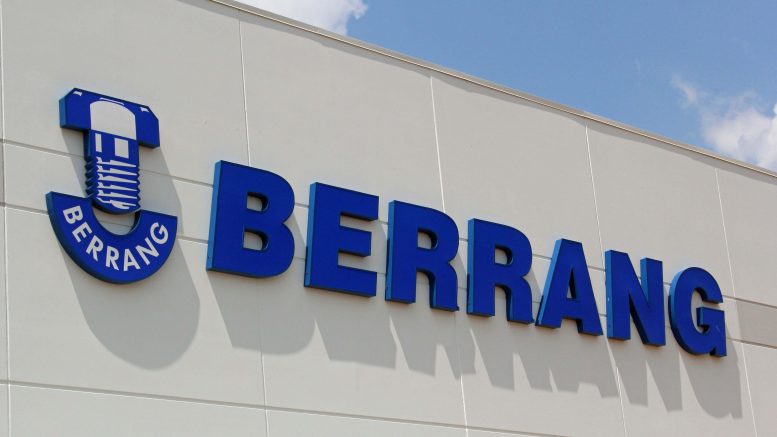For growing manufacturing operations, every aspect of the underlying infrastructure needs to be reconsidered. SCMFG talked with Thomas Koehler, General Manager of Berrang Inc. Greer plant, about a decision 10 years ago to upgrade their enterprise resource management, dramatically increasing the ability to respond to market pressures, capitalize on in-house knowledge, and streamline processes for the automotive fastener supplier.
Asked what drove the need for upgraded software, Koehler says it was “the sheer increase in part numbers…coupled with the increase of changing revision levels of existing part numbers.” In the automotive industry, every revision change of a drawing can impact the supply line.
Manufacturers who are used to a piecemeal collection of spreadsheets and inventory programs for tracking may need to invest in new solutions if serious growth is planned, or market pressures are increasing the complexity of the business. Looking at Berrang’s example, and investment in enterprise resource planning (ERP) software can essentially upgrade management systems from a black box to a crystal ball, but there are several aspects to consider.
Better Connection from Supply to Demand
Koehler says Berrang’s customers’ information is transmitted through EDIs (Electronic Data Interchange), which is where the ERP software is more often used. It allows Berrang to receive orders from customers and transmitting that information to suppliers as needed. In the meantime, the system calculates the warehouse stock level, freight travel time inbound from suppliers, and ensures parts can ship precisely when they’re needed.
Koehler says this kind of visibility and flexibility is important with its diverse and far-flung supplier population. For instance, U.S. suppliers may need weeks of lead time, but bringing supplies to South Carolina from Asia can take months. The ERP system allows Berrang to automate parts ordering according to specific categories such as location and transportation mode, while maintaining higher stock levels of parts that are logistically more challenging to acquire.
“With the old software it was impossible. It just listed a supplier but we couldn’t make a lot of individual changes to supplier requirements and show what was required to mirror good supply,” says Koehler.
All-in Ownership
The system depends on – and benefits – everybody in the organization, from sales to account management to purchasing, and more. Koehler says Berrang’s system helps quality control department in the event of a field claim, quality control can determine exactly what the customer received and then track the item back to the raw material supplier. Planners, on the other hand, can compare orders from the customers over several weeks to determine is there a lot of fluctuation, and then stock accordingly.
Knowing that so many different people would use the system meant having to consider aesthetics. Koehler feels that a windows-based interface with pull-down menus, as opposed to a black-and-white or green-and-white DOS-type screen was very important. Especially as younger people enter the workforce, the user interface is important for keeping them engaged.
Careful Shopping and Customizing
The buying process of the ERP system took time as Berrang painstakingly evaluated several options. The company eventually decided on a package geared for the automotive industry, which was modified over to fit specific needs. The system has essentially evolved in tandem with the business.
“In hindsight, without bragging, it was well thought out. We had a committee, with a lot of people involved,” says Koehler. Some key users learned the system well enough to become designated trainers.
“Nothing is perfect; everything has to be tweaked,” says Koehler. “But, it gives us what we need, and we supplement the identification of critical parts through excel sheets that are linked with the order entry software model.”
As the automotive industry continues on its next seven to 10-year cycle of growth, having tailored, industry-specific back-end software helps prepare Berrang for any change to come.



Be the first to comment on "Scaling up in 2018? Time to rethink your systems"